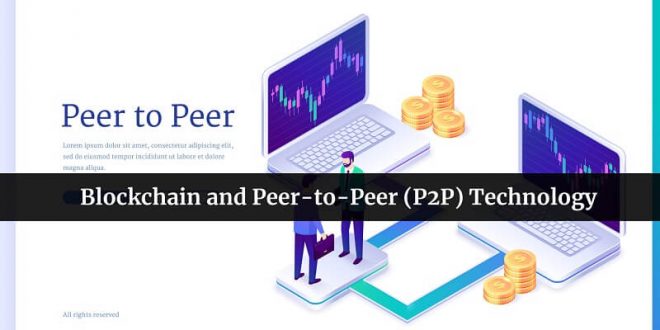Hey guys, today in this article, we are going to discuss understanding blockchain and peer-to-peer technology. So keep reading.
A group of devices, when connected to build up a common platform where all the Bitcoin Price Target devices are interlinked, creates a network; which is often termed a peer-to-peer network or P2P network. Now, this kind of network has a few common characteristics. One of the basic features is that each node or device linked within the network shares equal power and can operate similar tasks. The devices can use these networks to share files, and data, store them, etc.
Now the characteristic feature or explanation of any P2P network may differ as per the field it is relevant or connected with. In the case of cryptocurrencies or finance, a P2P is often a distributed network that works between peers to transfer or exchange cryptocurrencies, digital assets, fiat currency against digital coins, etc.
This kind of network eliminates the need for intermediates or third parties; rather, it directly connects buyers and sellers. So let’s start our topic is understanding blockchain and peer-to-peer technology.
Story Behind P2P Concept
The P2P concept was first witnessed back in the 1990s when its use was limited; although for file-sharing programs. A peer-to-peer network is crafted on a decentralized network communications model; where all the nodes known as peers operate individually yet connected, sharing equal powers. There is no central administrative power or server which monitors such a network.
The use of a P2P architecture network is versatile. However, the relevant purpose of using their models differs. Therefore, you can categorize the P2P network into:
Structured P2P Networks
In a structured peer-to-peer system; the nodes can easily access every bit of data since the data storage as well as nodes are organized in a definite structure for easy operations.
Unstructured P2P Networks
As the name implies unstructured peer-to-peer networks are networks connected randomly without a definite pattern. This, in turn, leads to compromise in the efficiency of this type of P2P network compared to structured ones.
Hybrid peer-to-peer Networks
Hybrid models are designed with client-server models and a P2P network design combination and therefore offer improved efficiency in performance and operations.
This P2P network technology is integrated with blockchain technology; which is the cryptocurrency system’s key operational foundation. Understanding the relationship between P2P networks and blockchain technology requires a little light on how blockchain technology works.
P2P vs. Traditional Client-Server Systems
To understand the relation between P2P networks and blockchain technology, it is important to understand the difference between P2P and the architecture of traditional client-server. In a traditional client-server, all operations are modulated through a central server; whereas in a P2P network; it is a shared network system with each node acting as both clients as well.
Role of P2P In Blockchain
Blockchain, therefore, works through an advanced version of the P2P network; where without the role of any central governing body, all transfers, transactions, and cryptocurrency holding data are managed within different nodes; all connected to each without the role of any middleman. This distributed peer-to-peer network works in a way that anyone with a device appropriate and technologically advanced can participate in validating and recording blocks. The formation of blockchain is due to multiple pieces of blocks, a group of information. When data flows and fills every block; the block connects with the blockchain, immutable. Blockchain is, therefore, a decentralized ledger system that tracks all cryptocurrency mining to the transaction in a peer-to-peer network. In this P2P network, each node can access the complete blockchain and be equally powerful in validating blocks.
P2P Crypto Exchange
P2P crypto exchanges eliminate the need for a third party and connect a seller and buyer directly to proceed with transactions. Unlike a bank or centralized institute, in a P2P crypto exchange, you don’t need to fill up KYC; your identity remains anonymous. There are several exchanges in the market today.
Wrapping it up !!!
However, even though there is no central government monitoring the cryptocurrency market; in the case of even digital asset transactions, you may need security. Exchanges like British Bitcoin Profit offer stringent security and a safe platform to connect with verified buyers and sellers. Therefore, to be a part of cryptocurrency trading or investment, a P2P network is inevitable. You must not undermine the role of a crypto exchange platform. It ensures a safer trading experience.
So that’s all from our side. I hope you like this article on understanding blockchain and peer-to-peer technology. Also, if you have any doubt then you can reach us in the comment section. Thanks for reading. Stay safe and have a good day.
 free html design Free html design templates
free html design Free html design templates






